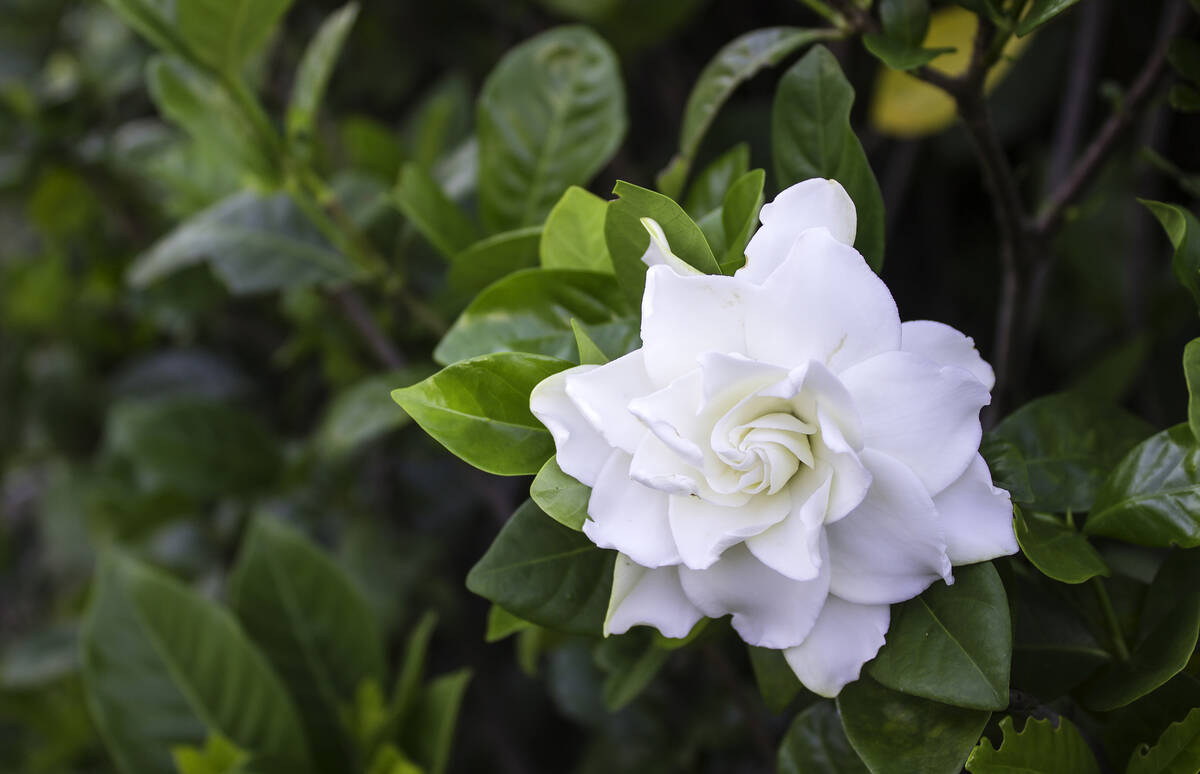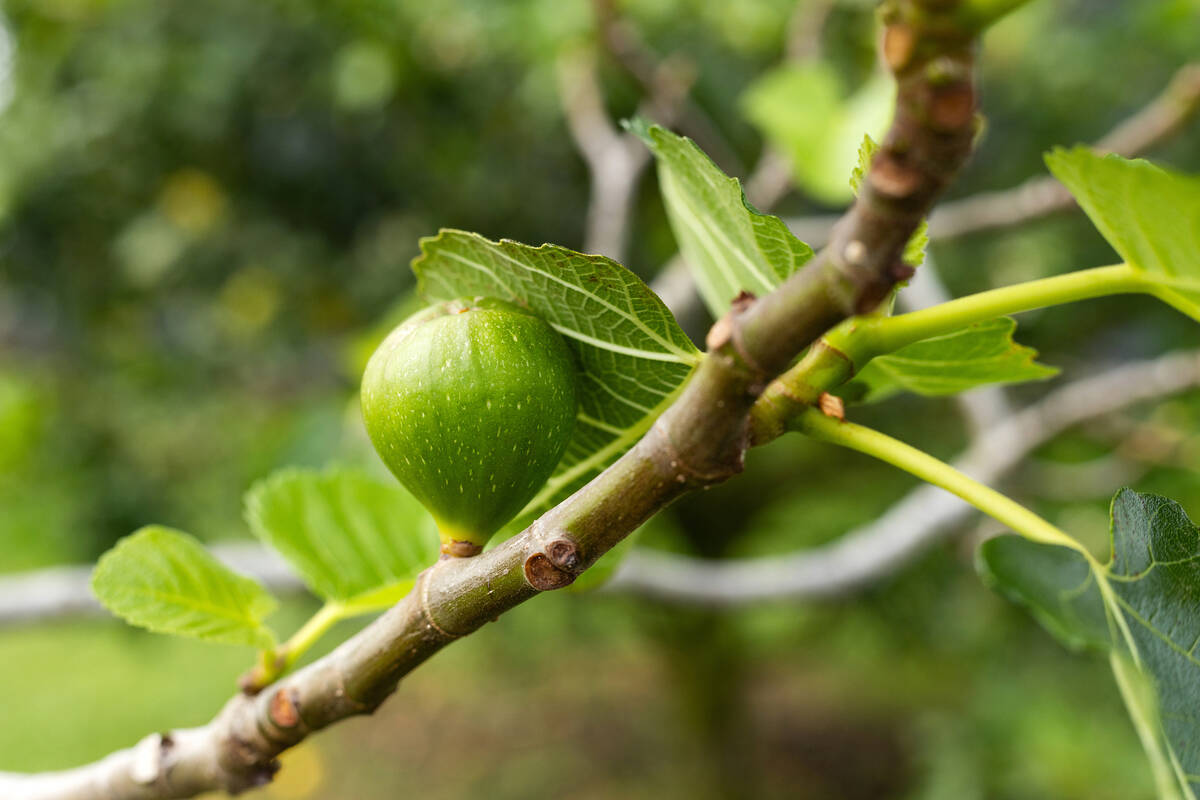What can be done to help ailing gardenia?
Q: My gardenia is not doing well. It’s on the north side of the house in a bed covered with rocks. It needs help. What would you suggest?
A: Gardenias have similar needs as roses. Their health and growth respond best to wood chip mulch decomposing on the soil surface. Gardenias prefer the east side of a building along with afternoon shade. Plant them with composted planting soil (organics in the soil) along with regular fertilizer applications. At some point, fertilizer alone won’t be enough; composted soil and wood chip mulch are very important for gardenias.
Water gardenias as you would roses or small fruit trees planted in the ground. Fertilizers should be applied lightly to gardenias (as well as roses) three to four times each year. To get good flowers, regular fertilizer applications are key. Avoid applying fertilizers during the heat of summer. The best application times are when air temperatures are cooler: when you start to see growth in the spring and when air temperatures drop below 90 degrees in the fall.
For the wood chips, apply a 2-to-3-inch-deep layer no closer than 1 foot from a young plant. Don’t use bark chips for soil enrichment. The soil can be left bare within 6 to 12 inches of the trunk of a young plant. If the leaves begin to yellow, you are watering too often, or have poor drainage, or the soil does not have enough organics. Add a thin layer of compost to the soil just under the surface mulch.
For a permanent fix, add more drip emitters. Water this plant more often as it gets hotter. Plants in general look better in the spring when they are watered less often. As it gets hotter, their need for water increases about 400 percent from its lower winter use.
Water them deeply and wait until the soil starts drying before applying the next irrigation.
Q: I have a Kadota fig tree that gives lots of fruit, but they are either hard as a rock or suddenly get mushy and fall off the tree. What am I doing wrong?
A: There are at least two crops of figs: one early and one later on any edible fig tree. My guess is that the early crop is getting enough water (when it’s cooler) but not the later crops (as it gets hotter). Remember, figs are water-loving trees like all fruit trees. As temperatures get warmer, they require water more frequently. Avoid daily watering and use a 2-to-3-inch layer of mulch to slow evaporative losses and improve a fig tree’s health.
Also, as your fig tree gets bigger, it will require more water. Prune it small and harvest the fruit from branches closer to the ground when possible.
Q: Should I cut out the limbs with all the brown needles on my Arizona cypress? The needles stopped falling off immediately and the ones that are left don’t look nearly as brown and dry. I have no idea how to go about pruning these huge trees. Not sure it would help. What do you think?
A: I would wait a month to see if new growth is coming before pruning it. The easiest way to see if it is dead is by bending the branches. If they seem supple and bendable, then normally they will continue growing.
Some people can’t tell the difference or are impatient to try it. If it is dead, it is OK to prune off anything you can with hand pruners. You still have time for new growth to hide any gaps that you create by pruning.
Q: My Fantasia nectarine survived over the winter. It got leaves and blossomed. Now the leaves aren’t looking great, and the branches are developing black tips almost like they’ve been burned. Could that be black fungus? If I need to dig out the tree and replace it, when would be the best time? Are we too close to summer to try that now?
A: This was a rough winter for plants. Throughout the winter this tree should not receive deep watering more often than once a week. February is the time to give mesic (water-loving) trees a full, deep watering once a week. How much depends on the tree’s size but make sure the roots get water 18 to 24 inches deep. Drip emitters are good for that. They should release water slowly.
For nectarine, the water should reach 18 to 24 inches deep depending on the tree’s height. Bigger trees have to be watered more deeply and wider.
Make sure the fruit tree was planted correctly (planting hole dug or the soil at least loosened three times the container width) and the hole backfilled with an amended soil. Was the tree was staked and watered in, and the soil around the tree covered with mulch?
With our level of humidity, any leaf or stem disease will not last long. If the tree looks good other than the leaves, let it go. Let the warm, and eventually hot, weather do its job.
Make sure it is fertilized properly in about four weeks, if needed.
Also, check for borers; they can be a problem in nectarines and peaches.
Q: My poplar is about 8 years old and has done well. It is over 20 feet tall now and was leafing out good this year but now appears to be dying. Is there something I can do to save it? It is on irrigation and has been since we bought it.
A: More and deeper. Expand the irrigation and give it more water by adding drip emitters. Most poplars are fast-growing trees and high in water use.
Generally, I would advise watering twice a week to a depth of at least 24 to 30 inches. This water needs to be applied to at least half the area under its canopy, or about 6 feet in diameter around the trunk. The easiest way might be to put a stationary sprinkler on the end of a hose and adjust the spray pattern to a 6-foot diameter. Apply water like this for one to two hours.
Bob Morris is a horticulture expert and professor emeritus of UNLV. Visit his blog at xtremehorticulture.blogspot.com. Send questions to Extremehort@aol.com.























